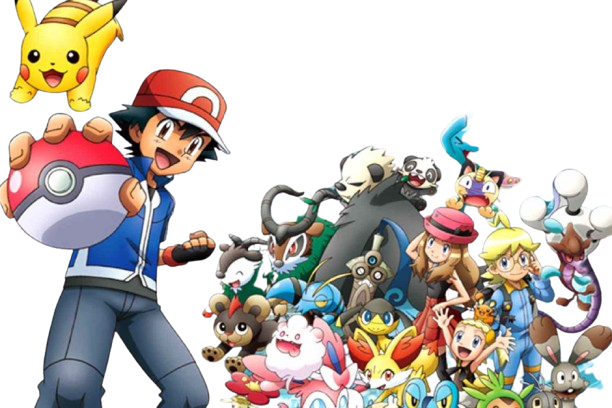
Since its debut in 1996, Pokémon has evolved from a simple Game Boy title to one of the most influential video game franchises of all time. Developed by Game Freak and published by Nintendo, the Pokémon series invites players into a world filled with fantastical creatures, where the ultimate goal is to become a Pokémon Master. Over the decades, the core gameplay elements have remained largely the same, but innovations and refinements have kept the franchise fresh and engaging for new generations of fans. Below is an exploration of what makes Pokémon games special, spanning their history, mechanics, and cultural impact.

Origins of Pokémon: A Concept Rooted in Exploration
The idea for Pokémon came from Satoshi Tajiri, the creator of the series, who had a childhood passion for insect collecting. He envisioned a game where players could capture creatures, train them, and battle them against one another. This concept laid the foundation for the “Gotta Catch ‘Em All” slogan that would define the series.
The first games, Pokémon Red and Pokémon Green (released as Red and Blue internationally), were released in Japan for the Game Boy. Players assumed the role of a Pokémon Trainer, whose mission was to capture and train Pokémon—unique creatures with special abilities—and battle other trainers, including the eight Gym Leaders of the fictional Kanto region. After defeating the Elite Four and the Champion, the Trainer’s journey would culminate in an attempt to capture the legendary Pokémon, often considered the rarest and most powerful creatures in the game.
Gameplay: Strategy Meets Adventure
At its core, the Pokémon series follows the journey of a young trainer as they strive to become the region’s Pokémon Champion. The world of Pokémon is divided into regions, each featuring unique environments, towns, and inhabitants. Throughout their journey, players explore various areas, encountering wild Pokémon that they can catch using Poké Balls. These wild Pokémon can later be trained to battle other trainers’ Pokémon, grow stronger, and evolve into more powerful forms.
A typical Pokémon battle follows a turn-based system where two Pokémon, each controlled by a player, exchange moves. Each Pokémon has a set of four moves, and these moves can range from direct attacks to defensive techniques. The strategy lies in understanding each Pokémon’s type and exploiting the weaknesses of opponents. Types—such as Fire, Water, Grass, Electric, Psychic, and more—operate on a rock-paper-scissors mechanic. For example, Fire-type Pokémon are weak against Water-type attacks but strong against Grass-types. This type system introduces a layer of depth to the battles, forcing players to think critically about their choices.
Beyond battling, Pokémon games emphasize exploration. Players navigate through lush forests, bustling cities, eerie caves, and sparkling oceans, all while interacting with non-player characters (NPCs) who provide helpful tips, battles, or new items. The adventure often includes side quests, puzzles, and the pursuit of legendary Pokémon—rare, powerful creatures that require unique strategies to capture.
Pokémon Evolution and Mechanics
One of the key elements of the series is Pokémon evolution. As Pokémon gain experience points from battles, they grow stronger, and many will eventually evolve into more powerful forms. Some Pokémon can evolve multiple times, with each evolution unlocking new abilities and enhancing the Pokémon’s stats. Other Pokémon evolve under specific conditions, such as when exposed to special evolutionary stones or when their bond with the player reaches a certain level of affection.
This system adds a sense of progression, making players feel as though they are genuinely growing alongside their Pokémon companions. Evolution often brings about physical changes to the Pokémon’s design, moveset, and base stats, offering a continual sense of novelty and growth.
Another defining mechanic of Pokémon games is the idea of “catching them all.” With each new release, the number of Pokémon expands, making the goal of completing the Pokédex—a comprehensive index of every Pokémon in the world—a core part of the gameplay. Some Pokémon are exclusive to specific versions of the game (such as in Pokémon Red versus Blue), encouraging players to trade with friends to complete their collections. This trading mechanic became one of the most important social aspects of the game, emphasizing collaboration in an otherwise single-player experience.
Multiplayer and Competitive Play
Pokémon’s competitive scene, often referred to as the “metagame,” is a cornerstone of its enduring popularity. While the main story mode of each game is primarily single-player, the ability to connect with other players for battles and trades is vital to the game’s appeal. Early Pokémon games utilized the Game Boy’s Link Cable to connect devices, but with advancements in technology, newer games now allow for online trading and battling.
In competitive play, strategy goes beyond simple type matchups. Players train their Pokémon to be battle-ready through a complex process of breeding, training, and honing stats. In addition to types and moves, factors like effort values (EVs) and individual values (IVs) play a significant role in determining a Pokémon’s strength in battle. Advanced players take great care in crafting their teams, choosing Pokémon that complement each other’s strengths and cover weaknesses. This has led to the development of Pokémon battle tournaments, including official events such as the Pokémon World Championships.
Generational Progression and Evolution of Graphics
Over the years, the Pokémon series has expanded through several generations of games, each introducing new mechanics, features, and regions. The first generation of games, with Red and Blue, set the basic framework, but each successive generation has introduced notable innovations.
The second generation, with Pokémon Gold and Silver, introduced a day-and-night cycle and breeding mechanics, which allowed players to hatch Pokémon from eggs. The third generation, with Pokémon Ruby and Sapphire, refined the graphics and expanded the lore of the Pokémon world, while the fourth generation, Diamond and Pearl, brought the series online for the first time, allowing players to battle and trade over the internet.
As technology improved, the series moved from 2D pixel art to 3D environments, most notably with the sixth generation games X and Y, which used full 3D models for both characters and Pokémon. The most recent generations, such as Sword and Shield, have taken this a step further, offering an open-world-like experience with the Wild Area, a place where Pokémon roam freely and players can explore in a more immersive way.
Cultural Impact and Legacy
Pokémon is more than just a video game; it’s a global phenomenon. In addition to the mainline games, the Pokémon franchise has expanded into other media, including trading card games, an animated TV series, movies, manga, and various spin-off games. The animated series, in particular, played a significant role in introducing Pokémon to a broader audience. Its protagonist, Ash Ketchum, and his faithful Pikachu, became international icons, inspiring millions of children worldwide to follow the franchise.
The Pokémon Go mobile game, released in 2016, marked a major shift for the series, bringing the world of Pokémon into augmented reality. Players could now catch Pokémon in the real world using their smartphones, merging the fictional universe with real-life locations and promoting physical activity and social interaction.
Conclusion
The Pokémon franchise has maintained its relevance through a combination of nostalgia, strategic innovation, and expansive world-building. Its appeal spans generations, making it one of the most enduring franchises in gaming history. Whether through collecting Pokémon, battling competitively, or simply exploring new regions, the series continues to captivate players, ensuring its place as a cornerstone of the gaming industry.







